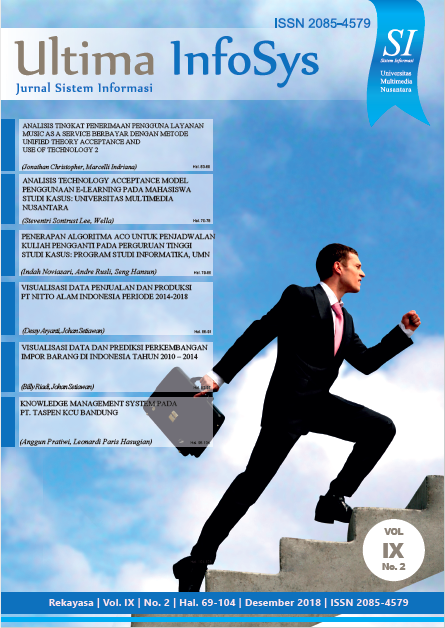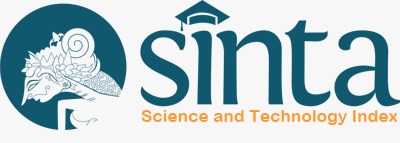Penerapan Algoritma ACO untuk Penjadwalan Kuliah Pengganti pada Perguruan Tinggi (Studi Kasus: Program Studi Informatika, Universitas Multimedia Nusantara)
Abstract
Students and scheduling are both essential parts in a higher educational institution. However, after schedules are arranged and students has agreed to them, there are some occasions that can occur beyond the control of the university or lecturer which require the courses to be cancelled and arranged for replacement course schedules. At Universitas Multimedia Nusantara, an agreement between lecturers and students manually every time to establish a replacement course. The agreement consists of a replacement date and time that will be registered to the division of BAAK UMN which then enter the new schedule to the system. In this study, Ant Colony Optimization algorithm is implemented for scheduling replacement courses to make it easier and less time consuming. The Ant Colony Optimization (ACO) algorithm is chosen because it is proven to be effective when implemented to many scheduling problems. Result shows that ACO could enhance the scheduling system in Universitas Multimedia Nusantara, which specifically tested on the Department of Informatics replacement course scheduling system. Furthermore, the newly built system has also been tested by several lecturers of Informatics UMN with a good level of perceived usefulness and perceived ease of use.
Keywords—scheduling system, replacement course, Universitas Multimedia Nusantara, Ant Colony Optimization
Downloads

This work is licensed under a Creative Commons Attribution-ShareAlike 4.0 International License.
Authors retain copyright and grant the journal right of first publication with the work simultaneously licensed under a Creative Commons Attribution-ShareAlike International License (CC-BY-SA 4.0) that allows others to share the work with an acknowledgement of the work's authorship and initial publication in this journal.
Authors are able to enter into separate, additional contractual arrangements for the non-exclusive distribution of the journal's published version of the work (e.g., post it to an institutional repository or publish it in a book), with an acknowledgement of its initial publication in this journal.
Copyright without Restrictions
The journal allows the author(s) to hold the copyright without restrictions and will retain publishing rights without restrictions.
The submitted papers are assumed to contain no proprietary material unprotected by patent or patent application; responsibility for technical content and for protection of proprietary material rests solely with the author(s) and their organizations and is not the responsibility of the ULTIMA InfoSys or its Editorial Staff. The main (first/corresponding) author is responsible for ensuring that the article has been seen and approved by all the other authors. It is the responsibility of the author to obtain all necessary copyright release permissions for the use of any copyrighted materials in the manuscript prior to the submission.















